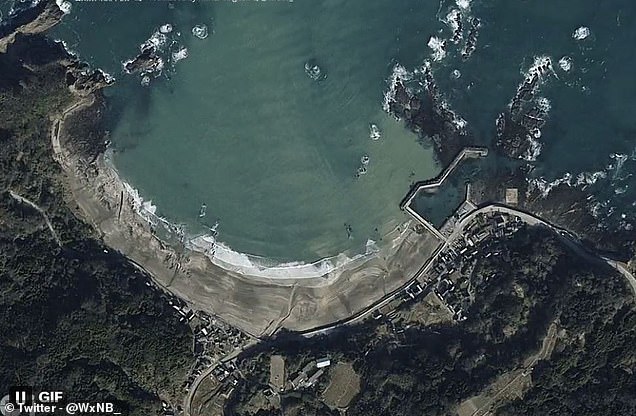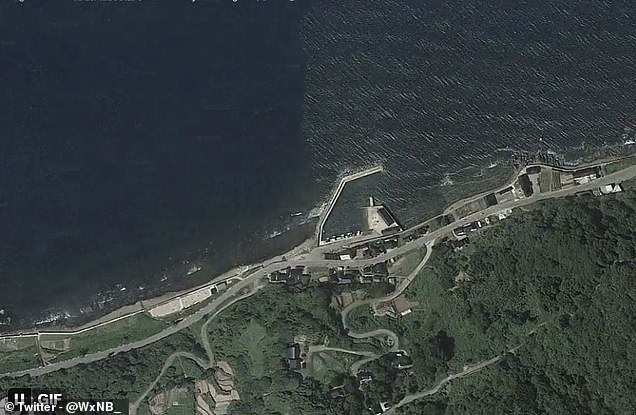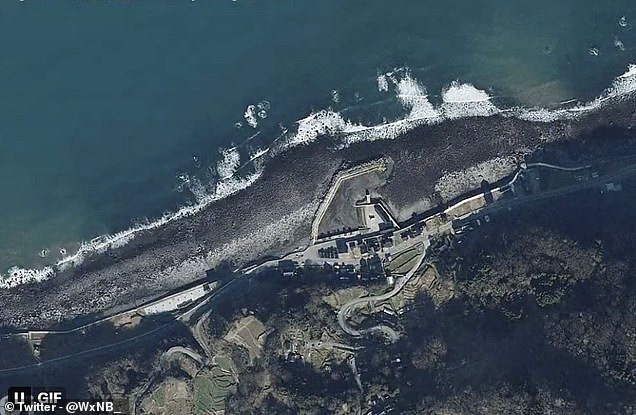Japan’s New Year’s Day earthquake was so strong it shifted the coastline by more than 800 feet, satellite images show
- Satellite images show that the earthquake shifted the coast by more than 250 meters
- The unrest in the country has created new beaches and dried up ports along the coast
On January 1, a magnitude 7.6 earthquake struck Japan shortly after midnight, killing 213 people and leaving 26,000 in emergency shelters.
Now satellite images have revealed the earthquake’s astonishing strength.
The shocking images show how the coastline shifted more than 250 meters due to the force of the quake.
On Japan’s Noto Peninsula, the magnitude of the earthquake was enough to create two football fields of new beach and leave the ports dry.
This is not an isolated event, as new evidence shows significant land rise at more than 10 points along the coast.
Satellite images shared on
Land disturbance occurred along the entire coast of the Noto Peninsula, as these photos show, drying up ports and creating new beaches
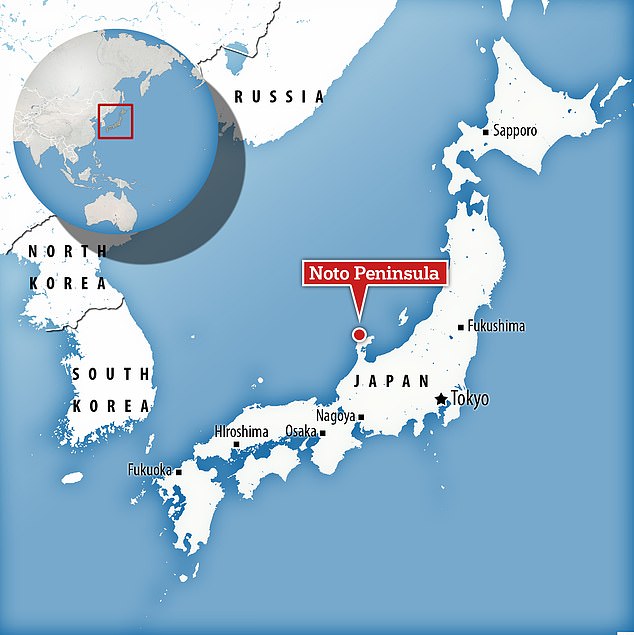
Satellite images have shown that the coastline of the Noto Peninsula has shifted as much as 250 meters seawards due to the force of the earthquake on New Year’s Day.
The images were shared on X (formerly Twitter) by Nahel Belgherze, an electronics engineer from France.
In his post, Mr Belgherze wrote: ‘The earthquake that struck Japan’s Noto Peninsula on Monday was so strong that the coastline moved up to 250 meters offshore due to significant land rise.’
The photos show part of the Noto Peninsula, which was the epicenter of the earthquake, before the New Year’s Day quake and after the tsunamis subsided.
They clearly show areas where the ground level has risen, exposing land that was previously hidden underwater.
Because Japan is so earthquake-prone, the country has the most sensitive earthquake detection network in the world.
A network of GPS stations at strategic points in the country shows how much the land has moved after an earthquake.
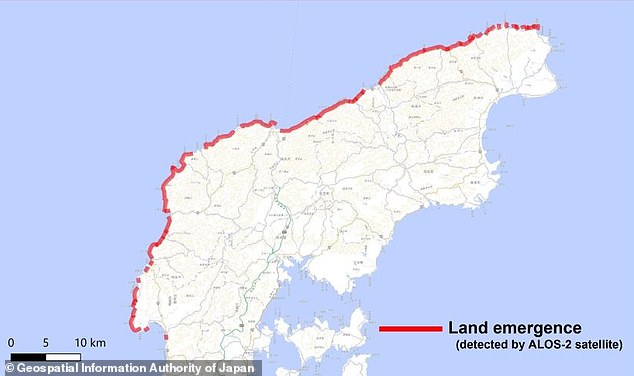
A network of GPS stations at strategic points in the country shows how much the land has moved after an earthquake. In this case, the system revealed that the land had shifted as much as 5 feet (130 cm) westward
In this case, the system revealed that the land had shifted as much as 5 feet (130 cm) westward.
Satellite images also showed extensive land uplift across the country, especially on the west coast of the Noto Peninsula, where these photos were taken.
A recent flyby of the ALOS-2 satellite revealed that virtually the entire coast had shifted seaward.
In some places the ground rose as much as four meters and shifted sideways by more than one meter.
However, the sudden increase in land height may have actually reduced the impact of the earthquake-induced tsunami waves.
The University of Tokyo reported evidence of waves between 4.6 and 8.5 feet (1.4 and 2.6 meters) on the Noto Peninsula.

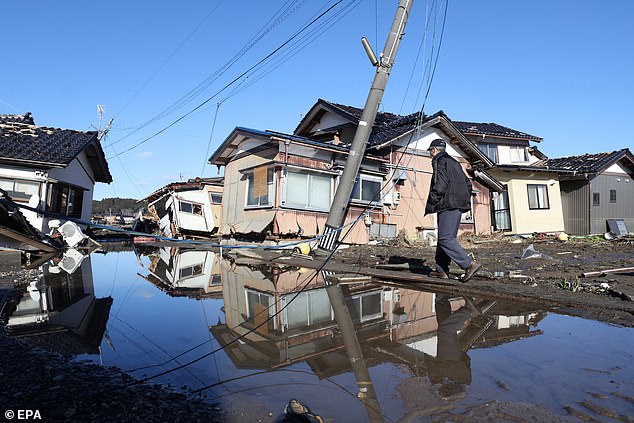
Scenes like the devastation here in Suzu, Ishikawa Prefecture, are common on the Noto Peninsula, which was the epicenter of the earthquake that displaced 26,000 people and killed more than 200.
Yesterday’s earthquake is currently believed to have killed 213 people, eight of them in evacuation centers.
About 26,000 people have been displaced after their homes were destroyed or deemed unsafe.
The soil in the area is now so loose that even small rain showers can cause landslides that can flatten entire settlements.
This week the country was rocked by another magnitude 6.0 earthquake that caused widespread destruction.
The quake struck the same part of the country as the New Year’s Day earthquake.
No tsunami warning was issued at the time.

